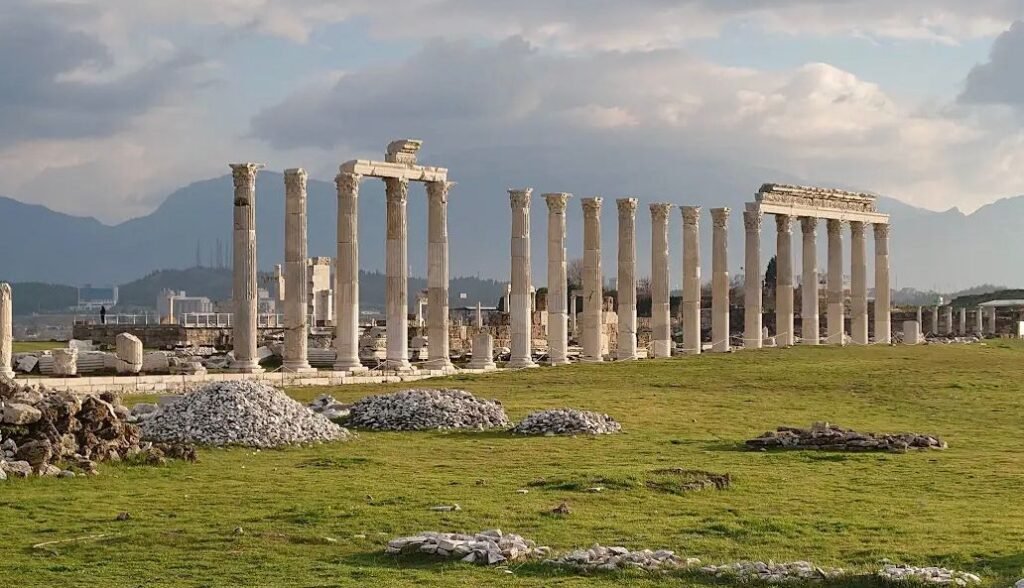Description
The Temple of Artemis: A Marvel of the Ancient World
Nestled in the historical town of Selçuk, near the modern city of İzmir, Turkey, the Temple of Artemis stands as a monumental testament to ancient architectural brilliance and spiritual devotion. Known as one of the Seven Wonders of the Ancient World, this majestic temple was dedicated to Artemis, the Greek goddess of the hunt, wilderness, and fertility. While time has reduced it to ruins, its legacy continues to captivate historians, travelers, and archaeologists alike.
A Historical Overview
The origins of the Temple of Artemis trace back to the 6th century BCE during the reign of the Lydian king, Croesus. Designed by the Greek architect Chersiphron and his son Metagenes, the temple was constructed on a grand scale, blending Hellenistic and Ionian architectural elements. It was built near the ancient city of Ephesus, which was a thriving cultural and religious hub in antiquity.
The temple underwent several reconstructions throughout its history. The most notable was after its destruction in 356 BCE by an arsonist named Herostratus, who sought fame by setting fire to the sacred site. The Ephesians, undeterred by this tragedy, rebuilt the temple even larger and more magnificent than before. At its zenith, the Temple of Artemis was a sprawling structure measuring approximately 115 meters in length and 55 meters in width, supported by 127 intricately carved columns, each towering 18 meters high.
Architectural Grandeur
The Temple of Artemis was not only a place of worship but also a masterpiece of engineering and artistry. Its colossal size and ornate design made it a beacon of ancient architectural innovation. The temple's base was elevated to protect it from flooding, and its columns were adorned with intricate reliefs depicting mythological scenes and floral motifs.
The interior housed a massive statue of Artemis, crafted from gold, silver, and ebony. This statue depicted the goddess not as a huntress but as a fertility deity, adorned with multiple breasts symbolizing abundance and nourishment. Surrounding the temple were open courtyards and altars, where rituals and ceremonies were performed.
Cultural and Religious Significance
The Temple of Artemis served as more than just a religious sanctuary; it was a cultural epicenter of the ancient world. Pilgrims from across the Mediterranean flocked to Ephesus to pay homage to the goddess and seek her blessings. The temple also played a vital role in the local economy, attracting merchants, artists, and craftsmen who contributed to its maintenance and embellishment.
In addition to its religious significance, the temple was a repository of art and knowledge. It housed priceless artworks, manuscripts, and treasures, serving as a testament to the advanced cultural achievements of its time. The Ephesians held grand festivals in honor of Artemis, featuring music, dance, and athletic competitions, which further solidified the temple's status as a center of communal and spiritual life.
Decline and Rediscovery
The decline of the Temple of Artemis began in the 3rd century CE, as the rise of Christianity led to the suppression of pagan practices. The temple was gradually abandoned, and its materials were repurposed for constructing other buildings, including churches and fortifications. By the 7th century CE, the once-glorious temple had fallen into obscurity.
The ruins of the Temple of Artemis were rediscovered in the 19th century by British archaeologist John Turtle Wood. Excavations revealed remnants of the temple's foundation, column fragments, and scattered artifacts, offering valuable insights into its grandeur and historical context. Today, only a single reconstructed column stands as a poignant reminder of its former splendor.
Visiting the Temple of Artemis Today
Despite its diminished state, the Temple of Artemis remains a must-visit destination for history enthusiasts and travelers exploring Turkey. Located within walking distance of Selçuk, the site offers a serene and contemplative atmosphere, surrounded by lush greenery and the distant silhouette of the İsa Bey Mosque and St. John’s Basilica.
Visitors can marvel at the solitary column standing amidst the ruins, which evokes a sense of both awe and melancholy. Informative plaques and guided tours provide context about the temple's historical significance and the broader history of Ephesus. Nearby attractions, such as the Ephesus Archaeological Museum and the ancient city of Ephesus, complement the visit, offering a comprehensive glimpse into the region's rich heritage.
The Enduring Legacy
The Temple of Artemis is more than just an archaeological site; it is a symbol of human creativity, resilience, and devotion. Its inclusion among the Seven Wonders of the Ancient World underscores its impact on the cultural and architectural legacy of humanity. Although only ruins remain, the spirit of the temple endures, inspiring generations to marvel at the achievements of the past.
As you stand amidst the remnants of the Temple of Artemis, it is impossible not to feel a profound connection to history. The echoes of ancient prayers and celebrations seem to linger in the air, reminding us of a time when the divine and the human coexisted in magnificent harmony. For those who seek to explore the wonders of the ancient world, the Temple of Artemis in Selçuk/İzmir is a journey back in time that should not be missed.
Location
-
Atatürk, Park İçi Yolu No:12, 35920 Selçuk/İzmir







